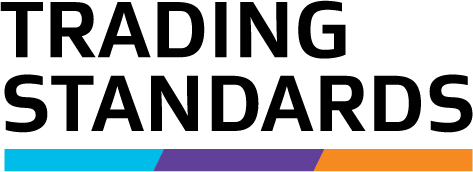Accredited person responsibilities
This section has information on the responsibilities of an Accredited Person.
The accreditation scheme is detailed in Part 4(external link) and Part 5(external link) of the Act and Part 2(external link) and Part 3(external link) of the Regulations.
For weights, measures and weighing or measuring instruments, Accredited Persons are under a duty to, and responsible for:
- Stamping or affixing a 'Mark of Verification'
- Issuing a 'Certificate of Accuracy'
- Declining to stamp with a 'Mark of Verification'
- Declining to issue a 'Certificate of Accuracy'
Note
The Accredited Person must be accredited for the category of instrument they are examining and/or testing.
Process of stamping an instrument
Accredited Persons must take the following steps before applying a Mark of Verification or issuing a Certificate of Accuracy:
- Examine the instrument and find that it:
- Complies with the requirements detailed in the Certificate of Approval
- Complies with the requirements of the Regulations
- Complies with any applicable requirements provided by the Trading Standards Technical Policies
- Is complete
- Is suitable to withstand the wear and tear of its intended use
- Will not facilitate fraud
- Test the instrument in accordance with an accredited organisation’s test procedures and record all errors to determine if they are within the required Maximum Permissible Errors (MPE).
Note
If a weighing or measuring instrument is marked with a Mark of Verification or issued with a Certificate of Accuracy that does not meet the above criteria, this may constitute an offence against the Accredited Person under Section 32(fa) of the Weights and Measures Act 1987.
Process of declining to stamp an instrument
Accredited Persons should decline to stamp with a Mark of Verification or decline to issue a Certificate of Accuracy when the instrument is found not to be complying with the above requirements.
When an Accredited Person declines to stamp with a Mark of Verification or declines to issue a Certificate of Accuracy, there is a legal obligation to issue a Notice of Non-Compliance.
Accredited Persons must take the following steps when issuing a Notice of Non-Compliance:
- Identify the non-compliance(s),
- Provide the person in charge of the equipment with a hard copy of the Notice of Non-Compliance immediately, or when the person in charge is not available, attach the Notice of Non-Compliance to the instrument,
- Advise the person in charge of the equipment that continued use of the instrument may be in breach of the Act or Regulations,
- Within seven working days from the date the Notice of Non-Compliance was issued, a copy of the Notice of Non-Compliance and associated test sheet is to be received by the Trading Standards Client Manager.
Note
The Accredited Person must be accredited for the category of instrument they are examining and/or testing in order to issue a Notice of Non-Compliance.
Accredited Persons do not have the power to prevent traders from using non-compliant weighing or measuring equipment and a Notice of Non-Compliance serves to notify the owner of the equipment that continued use may lead to legal action being taken by Trading Standards.
The power to ‘reject’ a non-complying weighing or measuring instrument, and to stop traders using such equipment, is limited to Trading Standards Officers.
Individuals accredited to more than one organisation
The legislation places no restriction on:
- The number of organisations an individual can be accredited to;
- How an individual is employed or engaged by any accredited organisation.
An individual can operate as an Accredited Person as long as the individual’s responsibility and authority within an accredited organisation is:
- Specified on the Letter of Accreditation;
- Specified in that organisation’s Quality Management System; and
- The individual is fully acquainted with and competent with the organisation's Quality Management System and associated documentation.
The above applies whether the individual is an employee or a contractor.
An Application for Accreditation is required for each applicant, and consequently all associated documentation is required and a compliance audit to be completed for each individual applicant under each accredited organisation.
Note
The accreditation of an individual is not transferable. For example: An individual who is accredited under organisation X for Class A equipment, will also have to apply to be accredited under organisation Y for Class A equipment.
Accredited Persons individual identification numbers
Each accredited individual will be issued with a unique identification number, which can be requested by the accredited organisation and then assigned by Trading Standards.
When an individual is removed from a Letter of Accreditation the individual identification number will be withheld from being allocated to another individual for a period not less that twelve months. In the event of an accredited individual losing their stamping equipment, Trading Standards may retire the current identifier and reallocate a new identifier to the affected individual.
